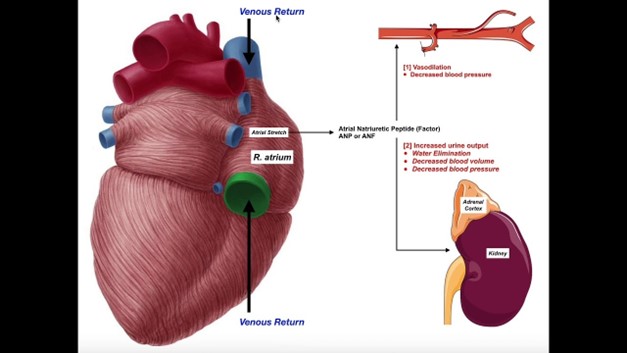Cardiac output is calculated by multiplying the stroke volume by the systolic blood pressure.
True
False
The Correct Answer is B
Cardiac output is calculated by multiplying the stroke volume by the heart rate, not by the systolic blood pressure.
Stroke volume is the amount of blood circulated by the heart with each beat. Heart rate is the number of beats per minute.
Systolic blood pressure is the pressure in the arteries when the heart contracts. Choice A is wrong because it confuses systolic blood pressure with heart rate.
Systolic blood pressure is not directly related to cardiac output, although it can be affected by it.
1: Cardiac Output- Definition, Factors Affecting, Cardiac Index - BYJU’S 2: Cardiac Output (Fick’s Formula) - MDCalc 3: Calculating how much blood is pumped by the heart - Cellular respiration and transport - Edexcel - GCSE Biology (Single Science) Revision - Edexcel - BBC Bitesize 4: Cardiac output - Structure and function of the heart - Higher Human Biology Revision - BBC Bitesize : Blood Pressure: What Is Normal? How To Measure Blood Pressure (healthline.com)
Nursing Test Bank
Naxlex Comprehensive Predictor Exams
Related Questions
Correct Answer is D
Explanation
Atrial natriuretic peptide (ANP) is a hormone secreted by the heart when the atria are stretched by high blood pressure or volume.

ANP has multiple effects, such as increasing urine and salt excretion, lowering blood pressure, and opposing the renin-angiotensin-aldosterone system.
Therefore, ANP inhibits the release of renin and aldosterone, which are hormones that increase blood pressure and sodium retention.
Choice A is wrong because ANP is not released from the adrenal cortex but from the cardiac atria.
ANP does not stimulate atrial hormones but rather inhibits them.
Choice B is wrong because ANP is not stimulated to release when blood volume decreases, but when it increases.
ANP acts to reduce blood volume by promoting diuresis and natriuresis.
Choice C is wrong because ANP does not raise blood pressure, but lowers it. ANP acts as a vasodilator and reduces peripheral resistance.
Correct Answer is B
Explanation
This is because erythroblastosis fetalis, also known as hemolytic disease of the newborn, is caused by Rh incompatibility between the mother and the fetus.
Rh incompatibility occurs when a Rh-negative mother is impregnated by a Rh-positive father, resulting in a Rh-positive fetus.
The mother’s immune system can detect the Rh factor on the fetus’s red blood cells as foreign and produce antibodies against them.
These antibodies can cross the placenta and destroy the fetus’s red blood cells, causing anemia, jaundice, edema, and other complications.
Choice A is wrong because a second Rh-negative fetus developing in an Rh-negative woman will not cause erythroblastosis fetalis.
The mother and the fetus have the same Rh factor, so there is no immune reaction.
Choice C is wrong because a first Rh-positive fetus developing in an Rh-negative woman will not cause erythroblastosis fetalis.
The mother’s immune system will not produce antibodies against the Rh factor until after the first exposure to it, which usually happens during delivery.
Therefore, the first pregnancy is usually unaffected.
Choice D is wrong because a first Rh-negative fetus developing in an Rh-negative woman will not cause erythroblastosis fetalis.
The mother and the fetus have the same Rh factor, so there is no immune reaction.
The normal range of red blood cell count for newborns is 4.1 to 6.1 million cells per microliter of blood.
The normal range of bilirubin level for newborns is 0.3 to 1.9 milligrams per deciliter of blood.
Whether you are a student looking to ace your exams or a practicing nurse seeking to enhance your expertise , our nursing education contents will empower you with the confidence and competence to make a difference in the lives of patients and become a respected leader in the healthcare field.
Visit Naxlex, invest in your future and unlock endless possibilities with our unparalleled nursing education contents today
Report Wrong Answer on the Current Question
Do you disagree with the answer? If yes, what is your expected answer? Explain.
Kindly be descriptive with the issue you are facing.
